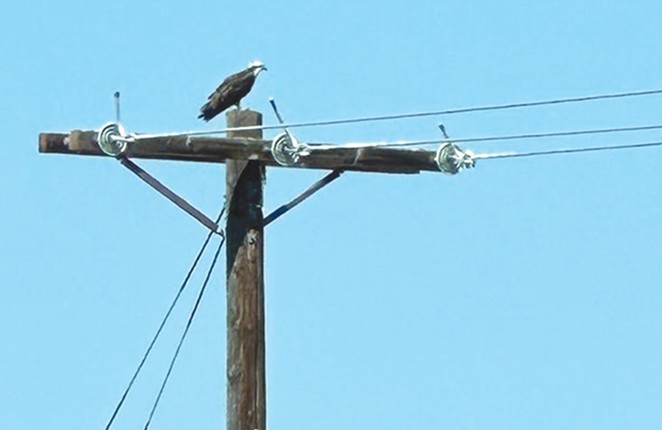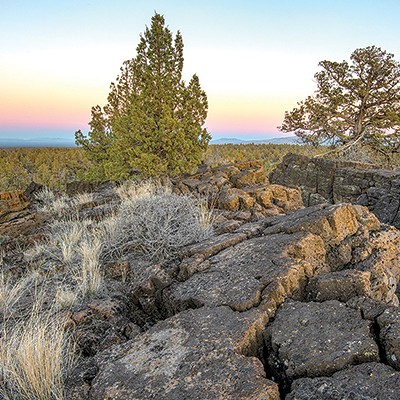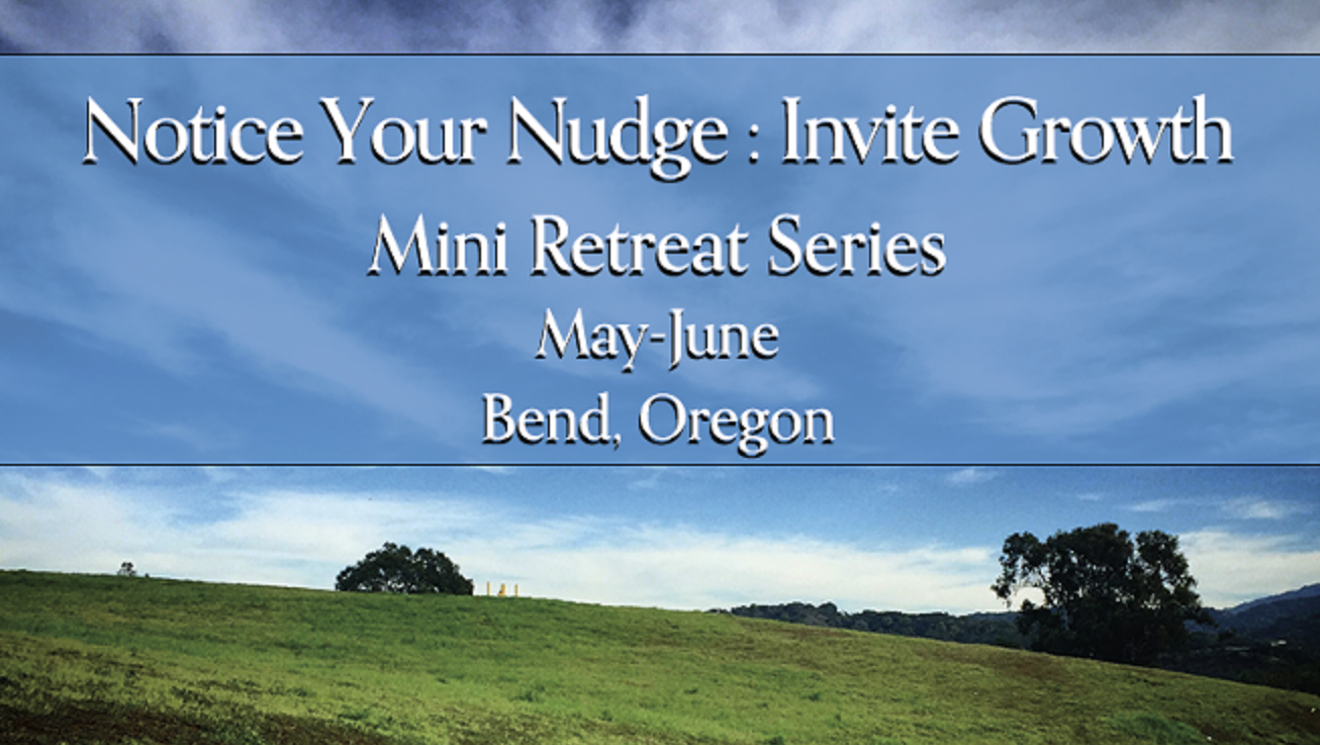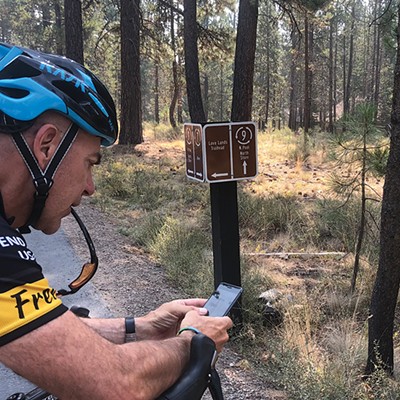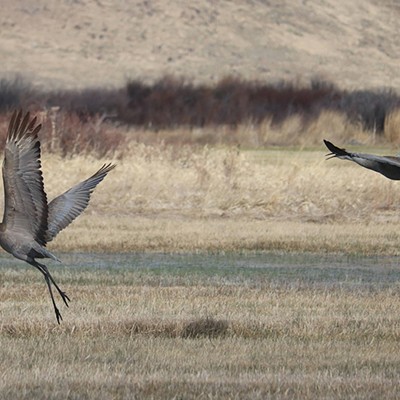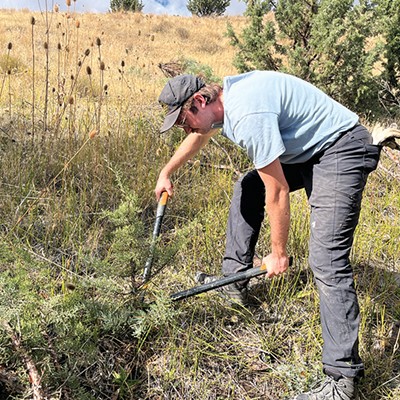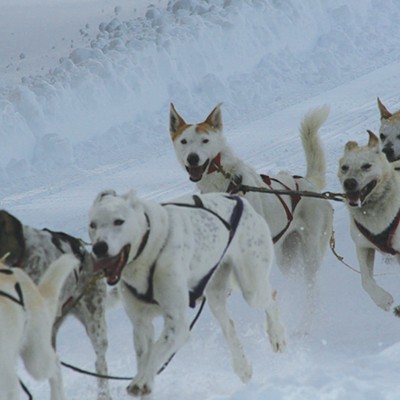Recent construction on the roads around Bend led to an incident that required some help from the local wildlife rescue, Think Wild.
Ospreys are fish-eating birds of prey that build a sizeable stick-nest atop a large tree or snag, on a bridge span or on an artificial platform. In Central Oregon, several of these nests are visible along Highway 97 in Bend and Redmond or along Highway 20 heading east from Bend. But, if a stick or bird wing or excrement contacts two wires simultaneously, or touches a wire and a piece of equipment, such as a transformer, the electrical current may result in electrocution or combustion. Then ignited material falling to the ground may then spark a wildfire.
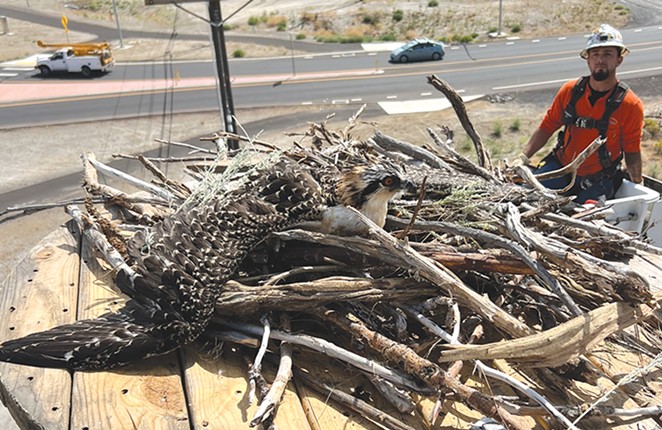
After years of population crashes due to DDT, which was banned in the U.S. in 1972, osprey populations have increased. An estimated nine out of 10 nests are built on artificial structures — power poles being a favorite nesting site.
To minimize danger to nesting birds, power companies install nesting platforms or perching posts on power poles. The companies don't want dead birds, nor do they want fires to start.
Recently, Pacific Power removed a nest platform along Highway 20 near the new Hamby and Ward roundabout in Bend to reduce fire danger. However, the crew did not know that there was a young bird in the nest.
"What they did not realize was that there was a young osprey who was either frightened out of the nest when it was approached or knocked down during nest removal," said Molly Honea, Think Wild development and communications coordinator. The wildlife rescue organization received a call to the Wildlife Hotline from a concerned citizen who noticed the missing nest and found the nestling on the ground when investigating the debris pile.
The young bird was in good condition and transported to Think Wild, a wildlife hospital and conservation center.
Pacific Power had plans to erect a new nest platform at the spot to provide next year's mating pair a better alternative than nesting on the power pole. "We asked them to expedite that project because the osprey in our care was in stable condition and the parents were spotted hanging around the nest site," said Honea. "We wanted to reunite the almost-fledgling with the parents as soon as possible."
Pacific Power crews returned to the area and erected a new nest platform. The company contacted Think Wild and Honea helped the crew reconstruct a new nest out of the old materials. When that was done, she placed the near-fledgling in the nest and left some fish for the youngster to feed on. Throughout the process, the nesting adults remained in the area.
A Pacific Power environmental specialist stayed to monitor the nest for the next several hours. He observed both parents visiting the nest checking on their nestling, so chances of a successful nesting got several helping hands.

